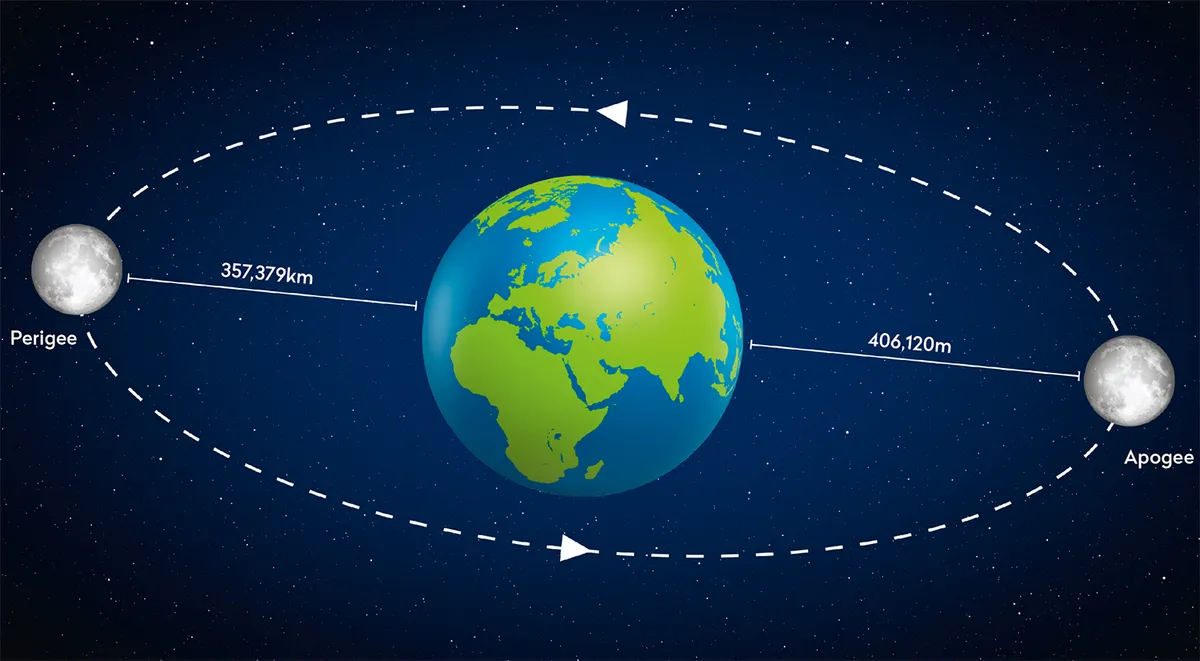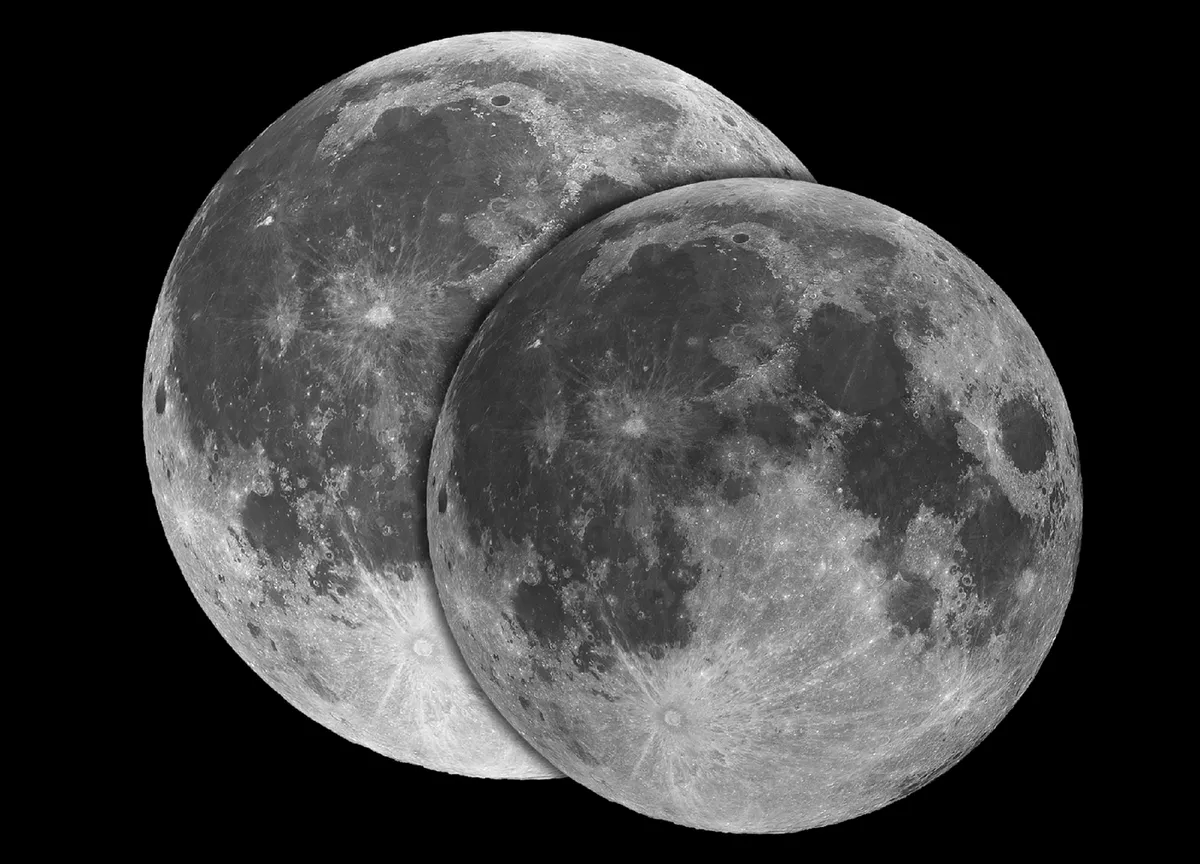The Super Harvest Moon eclipse of 18 September 2024 was a spectacle observed across the globe by stargazers and photographers alike.
Fans of the Moon had much to celebrate, as the 18 September full Moon was 2024's Harvest Moon, it was a supermoon and it also underwent a partial lunar eclipse.
The 18 September partial lunar eclipse was visible from the UK, Europe, North and South America and the whole of Africa.
Get key stargazing advice and dates for the week ahead by signing up to receive the BBC Sky at Night Magazine e-newsletter and listening to our weekly Star Diary podcast.

Harvest Moon
Normally, there are 12 full Moons in a year, one each month, and historically each full Moon has acquired an informal nickname.
These full Moon names often relate to the time of year in which the Moon appears. You can get the full list in our guide to the next full Moon.
The Wolf Moon occurs during January, and is probably named as such to mark the howling of wolves during winter months, as wolves don't hibernate like other animals do.
The February full Moon is informally known as the Snow Moon, most likely because it snows in February and this is generally the last, coldest month before spring.

The Buck Moon is the full Moon in July, and probably refers the time of year when male deer - known as 'bucks' - begin to grow their antlers.
The Harvest Moon occurs near the September equinox, meaning Moonrise times for the near-to-full phases are nearly the same on days before and after.
This means the difference in rise times from one evening to the next is smallest for the year, and bright, fuller phases of the Moon appear around the same time, meaning a bright, reliable Moon to aid the collection of the harvest.
In truth, the nicknames for the full Moons have no bearing on that Moon's appearance.

So the Strawberry Moon in June, for example, won't appear strawberry-coloured any more than a blue Moon appears blue!
Much hype often occurs around the named Moons, as the idea of a Strawberry Moon or a Wolf Moon really stirs the imagination.
This isn't necessarily a bad thing: anything that gets people outside and looking up at the night sky is something to be celebrated.
But for all the hype around terms like 'Harvest Moon', these full Moons do look like any other full Moon.
That being said, the sight of a bright full Moon in the sky is spectacular, and not something to take for granted.

And there may be moments when the Super Harvest Moon eclipse does appear unusually huge or even a different colour.
If it's low down in the sky, close to the horizon, the Moon will appear orange due to the effect of moonlight shining through Earth's atmosphere, and it will appear huge because of something known as the Moon illusion.
For more info, read our guide on how to observe a full Moon and how to make the most of a full Moon or supermoon.
Supermoon

You may have heard of the term 'supermoon' before and read articles promoting the idea that a supermoon is an enormous Moon, big, bright and visible in the sky.
The astronomical term for a supermoon is a 'perigee syzygy' Moon.

'Perigee' is the point in the Moon’s orbit when it’s closest to Earth. This occurs because the Moon's orbit around Earth isn't a perfect circle: it's an elliptical or egg-shaped orbit.
As a result, there are times when the Moon is farthest from Earth in its orbit (apogee), and times when it's closest to Earth in its orbit (perigee).
'Syzygy' refers to two astronomical objects positioned in a line: in this case the Sun, Earth and the Moon.

And that's what a supermoon is, explained simply. It's a bright full Moon that occurs when the Moon is closest to Earth in its orbit.
It's a 'perigee syzygy Moon'.
When this happens, the Moon appears a little brighter and a littler larger than a 'normal' full Moon, and has come to be known as a supermoon.
But is a supermoon really bigger and brighter?
Technically, yes, as we know it's closer and so will appear larger from our perspective on Earth.
But in reality, you're unlikely to notice any huge difference in the appearance of full Moons from one month to the next.

What you can do, however, is photograph each full Moon throughout the year from the same spot using the same equipment and settings.
In doing so, you can produce a visual record of just how much bigger a supermoon really is, compared to non-perigee full Moons.
Find out more in our guide on how to photograph the Moon and how to photograph the Moon with a smartphone
Partial lunar eclipse

The most obvious thing about the Super Harvest Moon eclipse is that it was the 18 September partial lunar eclipse.
This means that, while the full Moon was big, bright and fully lit by light from the Sun, for a period of time a portion of the Moon’s surface was darkened by Earth’s shadow.
The best time to see the lunar eclipse was 18 September, 01:41–05:47 BST (00:41–04:47 UT).

The effect is quite subtle, but visible nonetheless. You can use binoculars or a telescope to get a closer look at the shadow during a partial lunar eclipse
We put out a guide on how to photograph the 18 September partial lunar eclipse.
Did you enjoy or photograph the 'Super Harvest Moon eclipse'? Get in contact and share your experiences and images by emailing contactus@skyatnightmagazine.com
